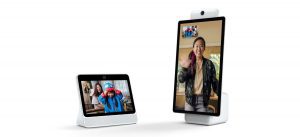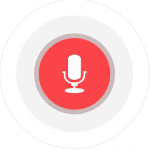A smart device is an electronic device, generally connected to other devices or networks via different wireless protocols such as Bluetooth, NFC, Wi-Fi, LiFi, 3G, etc., that can operate to some extent interactively and autonomously.
The recent addition to the smart devices is from the famous social media giant, Facebook. Facebook has created a new way to video chat with your Facebook friends. It’s not an app, nor is it some awkward virtual-reality playpen. It’s a device called Portal, and it’s meant to sit in your living room and serve as a two-way conduit for conversations with faraway friends and family.
Portal comes in two sizes. The large r Portal+ costs around $349 and has a 1080p screen that rotates into either portrait or landscape mode with a gentle push. The smaller Portal costs around $199 and has a 720p screen that stays stationary. When Portal is dormant, it serves up photos from your Facebook library, and it can play music from Spotify and Pandora, or videos from Facebook Watch. (More apps and more content are coming soon, Facebook says.) You can also use it to query the internet or control your smart home, as it comes with Alexa, because Alexa is everywhere.
r Portal+ costs around $349 and has a 1080p screen that rotates into either portrait or landscape mode with a gentle push. The smaller Portal costs around $199 and has a 720p screen that stays stationary. When Portal is dormant, it serves up photos from your Facebook library, and it can play music from Spotify and Pandora, or videos from Facebook Watch. (More apps and more content are coming soon, Facebook says.) You can also use it to query the internet or control your smart home, as it comes with Alexa, because Alexa is everywhere.
The camera on the front of the Portal runs a bit of software with the on-the-nose name of Smart Camera. The lens has a 140-degree field of view. That’s wide enough to slurp up a whole living room, and about on par with a GoPro’s lens. But when the Smart Camera software recognizes a human in the frame, it crops the image and zooms in, and it does so smoothly, like a skilled cinematographer would.
The Portal has 10-watt speakers and a 12-megapixel smart camera and the larger Portal+ has a 15.6-inch display with Full HD resolution and larger 20-watt speakers. Portal has a four mic array and 2 full-range drivers to power sound. The Portal, like the Portal+, also has a physical latch you can cover up the camera with so that you know it’s completely covered. There’s also a button near the top that physically cuts out the mics and camera for privacy.
Facebook Portal and Portal+ use computer vision to discern human shapes, find the face at the top of that shape, then follow that shape around the frame. The AI code powering those features is loaded onto each Portal, and that’s where the object tracking happens. It’s a trick similar to what Google was able to accomplish by loading AI code onto its Clips camera, enabling the camera to perform some rudimentary computer-vision analysis with no help from the cloud.
Entering the smart device market, Facebook has shown a clear desire to expand into other businesses than just connecting people.



